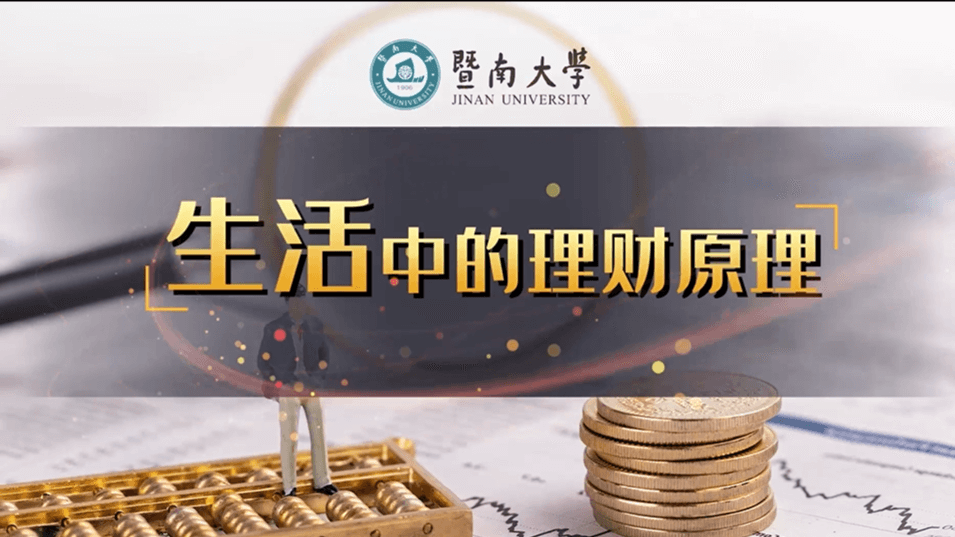
当前课程知识点:Methodology of Scientific Research > Lecture 5 Practical application of scientific research methods > Section 5.2 Analysis of Scientific Research Cases > 5.2.1 Example of Correct Topic Selection
返回《Methodology of Scientific Research》慕课在线视频课程列表
返回《Methodology of Scientific Research》慕课在线视频列表
下面我们讲授第2节
科研案例分析
前面我们已经讲了
以科研拉近距离的方法
那么现在我们再结合具体的科研例子
来阐述科研过程中科研方法如何付诸实施的关键
我们将从5个方面来进行案例的介绍
首先
正确选题案例
那么在选题的时候
我们需要把握三个原则
既要注重战略性和全局性
要善于捕捉机遇和持之以恒
要对自己的研究能力与优势具有正确的判断和把握
我们来看一下x射线的发现过程
它是1895年11月由德国物理学家人群发现
事实上
在人行发现x射线之前
不少人在使用克鲁克斯管
也就是阴极射线管时
也曾发现蜜蜂照相底版
然而在相当一段时间内
无人认为这种现象值得研究
不认为它可以构成一个科学问题
善于观察实验
留心意外之事
能够以其敏锐的识别能力
抓住该现象便一直跟踪
深入研究下去
从而做出了重大发现
为现代医学的诊断
以检测奠定了技术基础
也成为世界上第1位获得诺贝尔物理学奖的人
我们再来看看青霉素的发现过程
青霉素是抗菌素的一种
是从青霉菌培养液中提质的药物
是第1种
毒性很小就能有效杀进了抗生素
同其发现到量产
经历了14年
1928年
那么荷兰民在研究葡萄球菌
由于盖子没有盖好
他发觉培养细菌用的琼脂上附了一层青霉菌
这是从楼上的一位研究青霉菌的学者的窗口飘落进来的
而在青霉菌的附近,葡萄球菌不见了
他进行多次实验
证明青霉素可以在几小时内将葡萄球菌全部杀死
但青霉素的提成问题还没有解决
所以未能引起他人的重视
1935年
英国牛津大学生物化学家钱恩和物理学家佛罗里
对这个发现大感兴趣
钱恩就负责青霉菌的培养和青霉素的分离、提成和强化
使其抗菌力提高了几千倍
弗洛里负责对动物观察实验
证明青霉素的功效
那么1943年青霉素产量就已经能满足需求
青霉素的发现和大量生产
也拯救了千百万肺炎
脑膜炎
脓肿
败血症患者的生命
及时抢救了许多的伤病员
青霉素的发现与研究成功也就成为医学史上的一项奇迹
1945年共同获得诺贝尔医学和生理学奖
我们再看一个数学应用案例
自然科学中的大量规律
都是运用了数学方法才得以总结出的
1884年
人们已经知道新光谱可见光范围内的4条谱线的波长数据
1885年类似数学教师巴尔莫对其进行数学建模分析
并得到了我们这里面的巴尔默公式
从而促进 n=7等其他普遍的发现
1890年
物理学家把将把公式变形使得物理意义更为明确
那么在这个基础上
人们推广
得到了广义巴尔莫公式
促进了脉脉系,德系等星光谱系的发现
1908年立足提出合并原则
使得这个公式具有简明且物理意义清晰的特点
同时巴尔末公式也是导致波尔理论诞生的一个相当重要的因素
我们再来看一个有序对称的案例
自然界的许多规律是建立在有序与对称的基础
科学的任务是从混乱的现象中追求有效的本质
所以我们在进行科研中也要利用这种规律去对
我们研究进行一个深入的开展
例如元素周期律的发现
当时的化学家们已经发现了63种元素
为了描述其规律
也提出了三四组
或者是巴依利的假说
但是这些猜想
要么没有普遍性
要么错漏颇多
没有办法接受事实的检验
俄国化学家门捷列夫将每一种元素的名称和性质制作成纸片
进行各种形式的排列
终于在1869年找到了一个有序和谐的化学元素体系
而根据这元素周期律
门捷列夫预言了当时还未知的11种元素
其中的几种元素被人发现依然惊人的相似
元素周期律的发现
使人们对化学元素的认识飞跃到一个崭新的阶段
依然发现反粒子也是一个充分利用、有序对称的案例
1928年
英国物理学家迪拉克建立了描述单个电子运动的量子力学方程
狄拉克方程
那么它存在正肽键
也就是说粒子的总能量是为正的
和副肽键粒子的总能量为负
那么正能态和负能态的分布是完全对称的
因此他依然我们存在以电子性质相同
但具有相反电荷的例子,也就是正电子
1932年
美国物理学家安德森在影射中拍到了正电子的照片
证实了迪拉克的意愿
一系列的反例子
被发现1934年
吉里夫妇发现了光子对象电子对的转发
1955年发现了反质子
1956年
发现了反中子
那么到了20世纪六七十年代
从理论上推测应该存在的各种反例子
都已经找到
自然界向我们展示了它的质量
与电量上的对称性
所以我们可以充分利用来拓展我们的研究深度
拓展新方向
-Section 1.1 Basic Concepts of Scientific Research
--1.1.1 Basic Concepts of Research
-Section 1.2 General Procedure of Scientific Research
--1.2.3 Process of Natural Science
--1.2.4 Process of Social Science
--1.2.5 Process of Technologial Science
-Section 1.3 How to Prepare for Scientific Research
--1.3.1 Motivation of Research
-Test-Lecture #1
-Section 2.1 Types and Sources of Research Project
-Section 2.2 Principles and Methods of Topic Selection
--2.2.1 Principle of Topic Selection
--2.2.2 Methods of Topic Selection
--2.2.3 Procedure and Strategy of Topic Selection
-Section 2.3 Information Collection of Project
--2.3.1 Type, Collection and Search of Information
-Test-Lecture #2
-Section 3.1 Typical Research Methods
--3.1.1 Level of Research Method
--3.1.2 Concept of Research Method
--3.1.3 Typical Research Methods
-Section 3.2 Typical Thinking Modes
--3.2.1 Thinking and its Characteristics
--3.2.2 General Innovative Thinking
--3.2.3 Typical Thinking Modes
-Section 3.3 Analysis of Research Cases
--3.3.1 Question Description and Concept
--3.3.2 Three-Level Theory of Problem
--3.3.3 Train of Question Consciousness
-Test-Lecture #3
-Section 4.1 Research-oriented Scientific Design
--4.1.1 General Scientific Design
--4.1.3 Example of Research Design
--4.1.4 Other kinds of Research Design
-Section 4.2 Experimental Scientific Research Design
--4.2.4 Example of Experimental Design
-Section 4.3 Application-oriented Scientific Design
--4.3.1 Basic Concepts and Significance
--4.3.3 Example of Applied Design
--4.3.4 Train of Research Skills
-Test-Lecture #4
-Section 5.1 Initial Entry into the Research Group
--5.1.2 Consider Research Outline
-Section 5.2 Analysis of Scientific Research Cases
--5.2.1 Example of Correct Topic Selection
--5.2.2 Example of Team Cooperation
--5.2.3 Test of Non-invasive PDM
-Section 5.3 Research-based Learning and Research
--5.3.1 Overview of Research Learning
--5.3.2 Research-based Learning
--5.3.3 Research Train for Undergraduates
-Test-Lecture #5
-Section 6.1 Scientific Research Strategy and Tactics
--6.1.1 Strategy in Research Work
--6.1.2 Tactics in Research Work
--6.1.3 Research Group and Management
-Section 6.2 Scientific Research Tactful Operation
--6.2.3 Typical Research Planning
-Section 6.3 Discrimination of Research Obstruction
--6.3.2 Origin of Research Obstruction
--6.3.3 Case of Research Obstruction
--6.3.4 Strategy to Remove Obstruction
-Test-Lecture #6
-Section 7.1 Research Papers and Writing
--7.1.2 Writing Research Paper
-Section 7.2 Rules for Submission and Publication
--7.2.1 Preparing for Contribution
--7.2.2 Process of Publication
--7.2.3 Strategy of Contribution
-Section 7.3 Examples and Analysis of Paper
--7.3.1 Basic Structure of Paper
--7.3.3 Introduction, Main Content and Conclusion
-Test-Lecture #7
-Section 8.1 Introduction of Invention and Creation
--8.1.1 Generality of Invention
--8.1.2 Principle of Invention
--8.1.3 Risk and Protection of Invention
-Section 8.2 Patent Types and Applications
--8.2.1 Characteristics and Types of Patent
--8.2.3 Process of Applying Patent
-Section 8.3 Patent Examples and Analysis
--8.3.1 Example of Invention Patent
--8.3.2 Example of Utility Model Patent
--8.3.3 Example of Design Patent
-Test-Lecture #8
-Section 9.1 Characteristics, Types and Titles of Academic Conferences
--9.1.1 Characteristisc of Academic Conference
--9.1.2 Types of Academic Conference
--9.1.3 Title of Academic Conference
-Section 9.2 Basic Elements and Report Types of Academic Conferences
--9.2.1 Basic Elements of Conference
--9.2.2 Types of Conference Report
-Section 9.3 Main Points, Syntax and Summary of Academic Reports
--9.3.1 Writing and Accepting Conference Paper
--9.3.2 Exercise before Reporting
-Test-Lecture #9
-Section 10.1 Character and Type of Researcher
--10.1.1 Basic Moral of Researcher
--10.1.2 Moral Outlook of Researcher
--10.1.3 Talent Type and Innovative Quality
-Section 10.2 Research Ethics and Academic Norms
--10.2.1 Generality of Research Morality
--10.2.3 Monitoring Measure of Research
-Section 10.3 Research Relationship and Incentive Mechanism
--10.3.1 Generality of Research Relation
--10.3.2 Typical Research Relation
--10.3.3 Research Incentive System
-Test-Lecture #10
